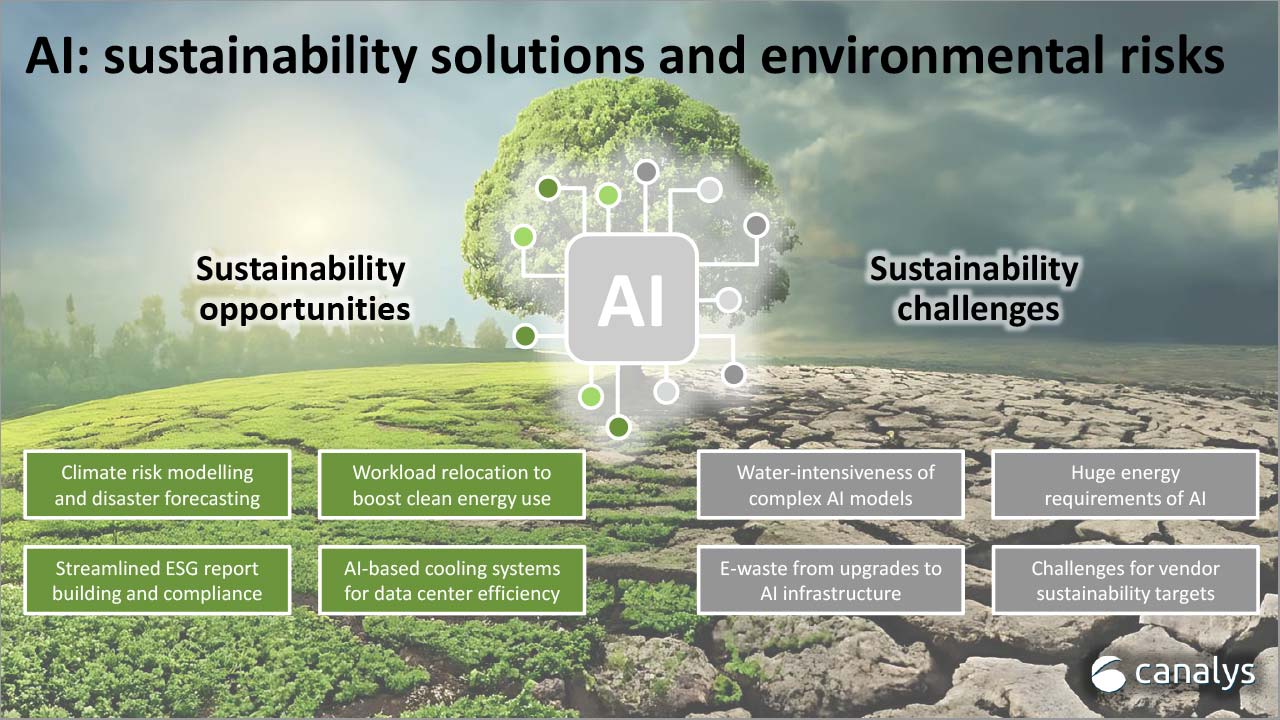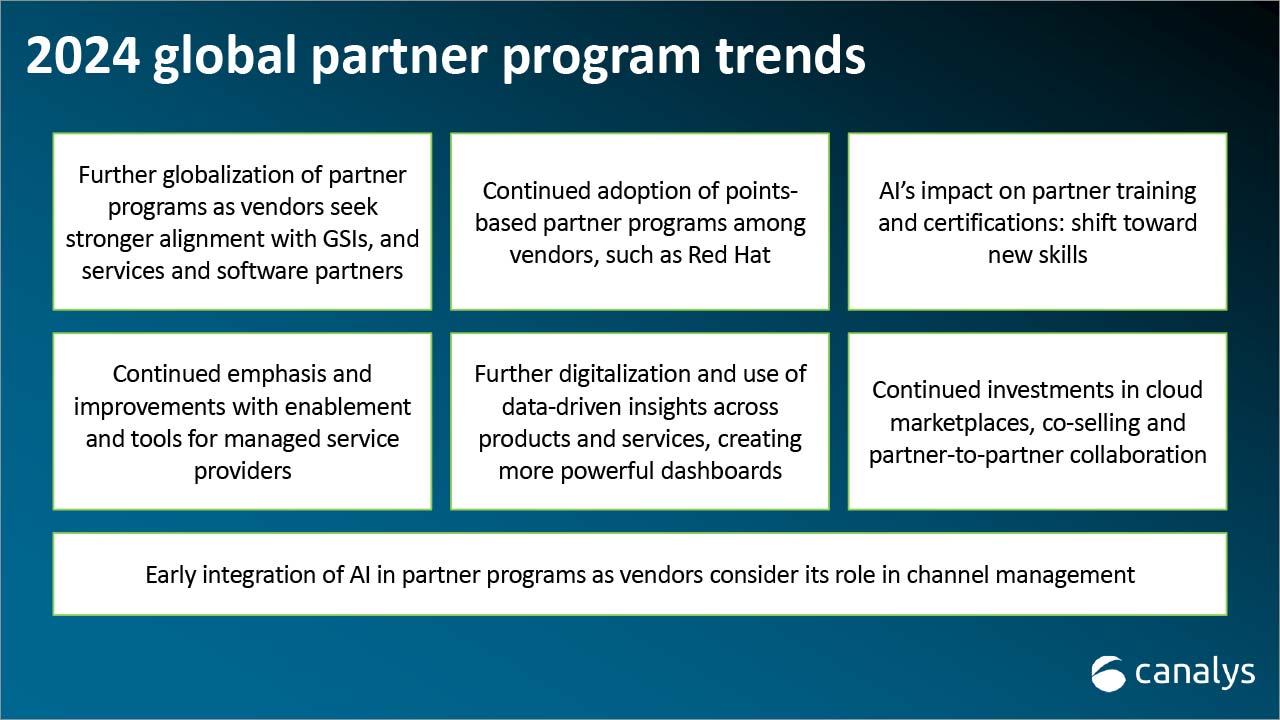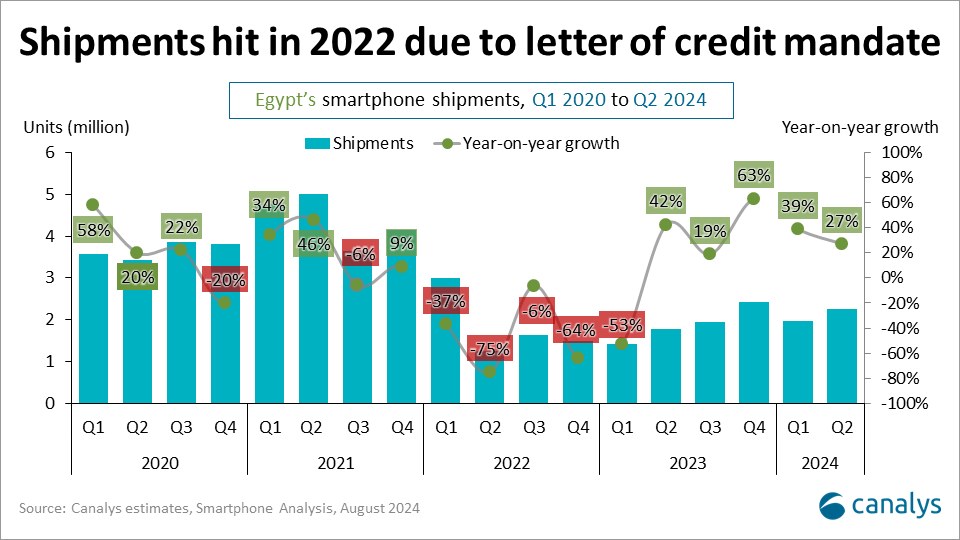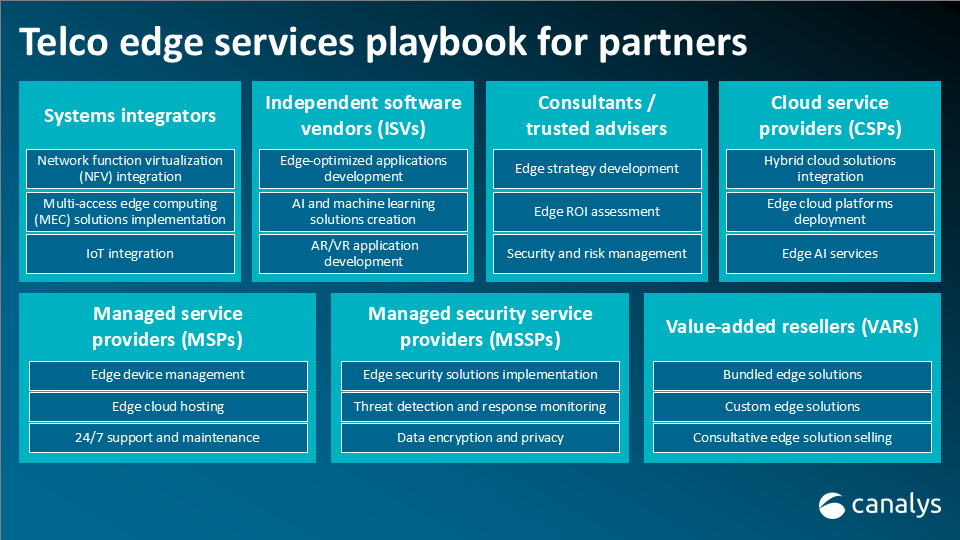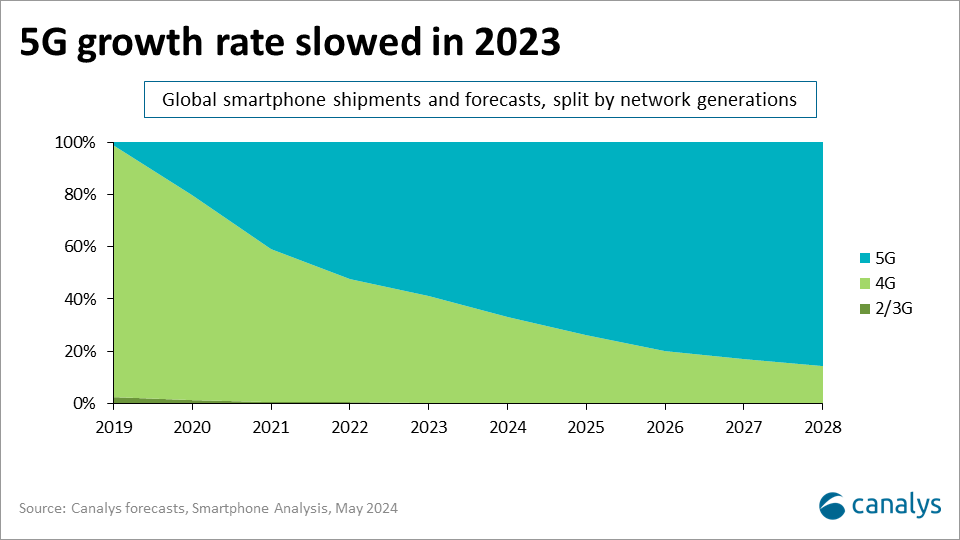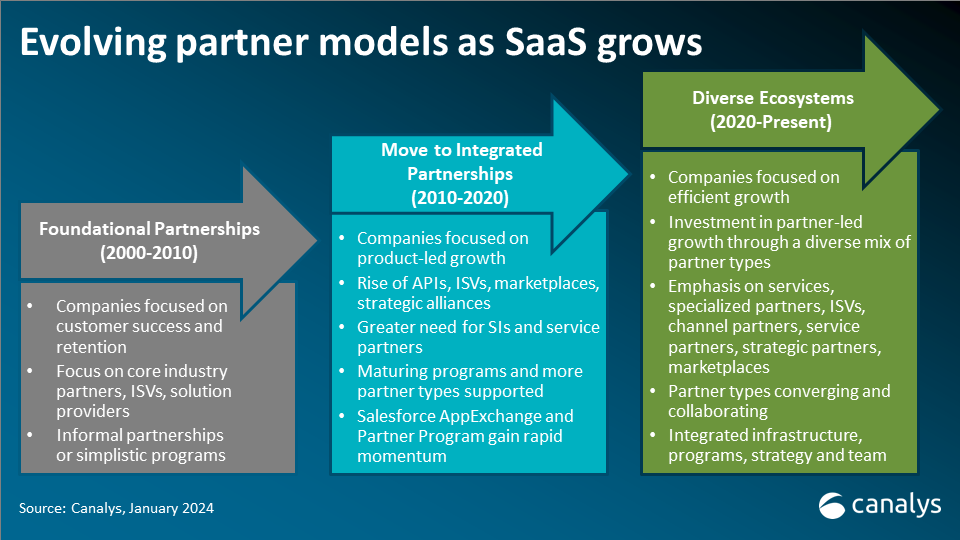Canalys is part of Informa PLC
This site is operated by a business or businesses owned by Informa PLC and all copyright resides with them. Informa PLC’s registered office is 5 Howick Place, London SW1P 1WG. Registered in England and Wales. Number 8860726.
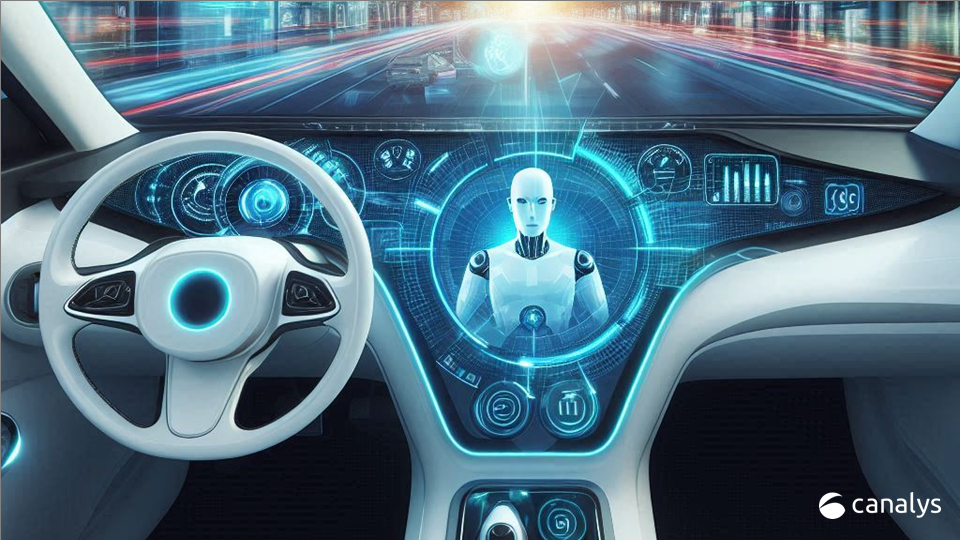
How AI integration in the digital cockpit is driving transformation
As automotive technology advances, software-defined vehicles and AI are driving the transformation to reinvent in-vehicle experiences. Automakers adopting AI in digital cockpits aim to enhance user interactions, personalize experiences and differentiate their brands, yet face challenges such as data privacy, resource planning and regulatory compliance in this journey toward intelligent vehicle development.

Software-defined vehicles and AI are two major trends driving advancement in in-vehicle technology. Many automakers have announced strategies and roadmaps, focusing on building the next generation of vehicles bottom-up on a new architecture that reduces hardware-software complexities and enables them to build upgradable systems over a vehicle's lifetime with innovative features. The mid-2020s marks a pivotal point as automakers aim to launch new vehicles equipped with central operating systems powered by AI and advanced SoC platforms. GenAI and large language models (LLMs) are expected to play a crucial role in this transformation. These technologies will enhance in-car voice assistance, offering services that integrate seamlessly with the vehicle's various functional domains, resulting in more personalized and intuitive user interactions and elevating the overall driving experience.
The role of AI in the digital cockpit
The primary objective of integrating AI into digital cockpits is to enrich the user experience. LLMs can understand and process complex, open-ended queries, providing a more conversational and human-like experience. This enables drivers to request information, control functions and access entertainment easily. AI will enable deep personalization by learning user habits and preferences, offering tailored recommendations, and adjusting settings intuitively and autonomously. It integrates multiple functional domains seamlessly, such as navigation, infotainment and safety systems. It can monitor driver behavior, provide real-time alerts and aid decision-making, reducing distractions and improving road safety.
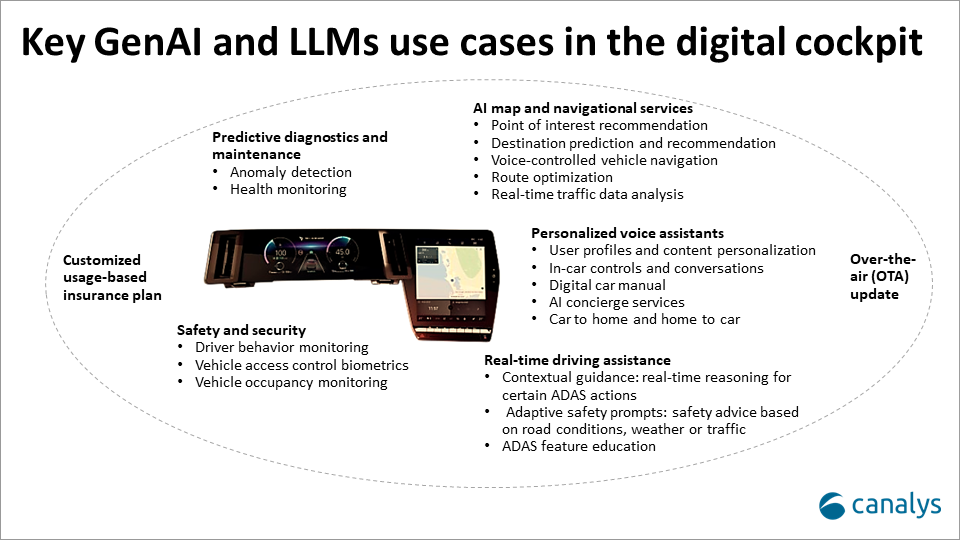
Automakers adopt a multifaceted approach to deploying AI in digital cockpits
For automakers, AI is a key differentiator that sets brands apart in a crowded market. Strategies to integrate AI models into the cockpit involve either partnering with tech vendors or developing in-house models tailored to specific audiences and needs.
In-house AI development allows for optimized computing resources, real-time functionality and personalized features, but it comes with high development costs, a longer time to market, and a need for significant expertise. New-generation automakers like Li Auto, Xpeng and NIO are leading with in-house AI models. Li Auto’s Mind GPT powers its voice assistant in over 800,000 cars. Xpeng showcased its new AI assistant Xiao P, which offers concierge-level services through smart reasoning, scheduling and an in-car encyclopedia. NIO's NOMI GPT, built on its Xingrui AI model, is integrated into the latest models, offering advanced interactions and emotional expression.
In contrast, many traditional automakers partner with tech companies to integrate pre-trained AI models, ensuring faster deployment and reduced costs. However, this approach may limit customization and create dependency on third-party providers. Examples include Mercedes-Benz's collaboration with Microsoft Azure, BMW with Amazon's Alexa LLM and Volkswagen with Cerence for its IDA voice assistance.
Opportunities and challenges for automakers
With GenAI integration, automakers can differentiate themselves from the competition, build brand loyalty and leverage new revenue streams. Automakers can bring new services, brands’ custom styles and identities built deep into their vehicles, offering experiential value and establishing user trust. Different SoCs are used to create distinct product tiers, with high-end SoCs powering flagship models and more cost-effective options for entry-level vehicles, enabling tailored AI capabilities across vehicle segments and promoting differentiation.
However, Monetizing AI in vehicles is challenging due to the small user base and platforms are fragmented, increasing the complexity of developing AI apps. High development costs and chipsets to cloud connectivity require additional investment. With unclear business models, there is no huge push to monetize AI features so quickly. Automakers should continue expanding the installation base and familiarizing users with AI features. They can partner with developers to integrate new AI-compatible apps and skills to which users can relate, such as apps from smartphones, which will elevate relevance and user satisfaction. An effective pricing strategy, including trials and tiered plans, can cater to different user needs.
As automakers embrace AI, they should enhance safety by managing tasks like driver monitoring and emergency alerts while critical decisions remain with the drivers until AI proves fully reliable. Continuous advancements in AI for better decision-making, coupled with fail-safe safety protocols and human-machine interfaces that maintain driver engagement, are essential for trust and safety. However, automakers face significant challenges in AI integration, such as ensuring data privacy and security, managing computational resources, and adhering to evolving regulations. The need for strong encryption, data protection and flexible compliance frameworks that can adapt to varying regional requirements is significant, as well as addressing ethical considerations to ensure AI systems are fair, unbiased, and transparent for maintaining public trust and aligning with societal standards.
In conclusion, AI integration into digital cockpits is not just transforming the in-vehicle experience - it is revolutionizing the automotive industry. Automakers who successfully leverage AI will differentiate their brands, enhance user experiences and unlock new revenue streams. However, the journey is not without challenges, including data privacy concerns, computational resource planning and regulatory compliance. By addressing these challenges and embracing AI's potential, automakers can shape the future of intelligent vehicles and secure a competitive edge in the market.
